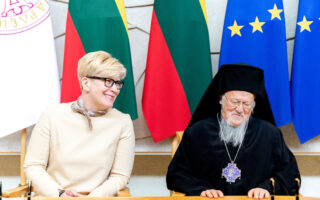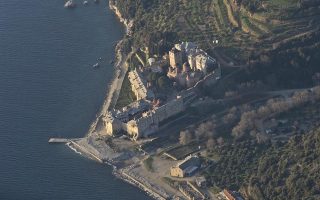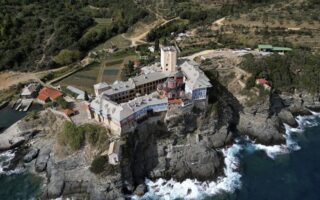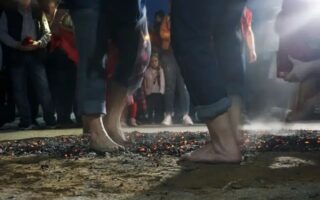Transfer of holy icon shows Russian Orthodoxy’s new sway under Putin
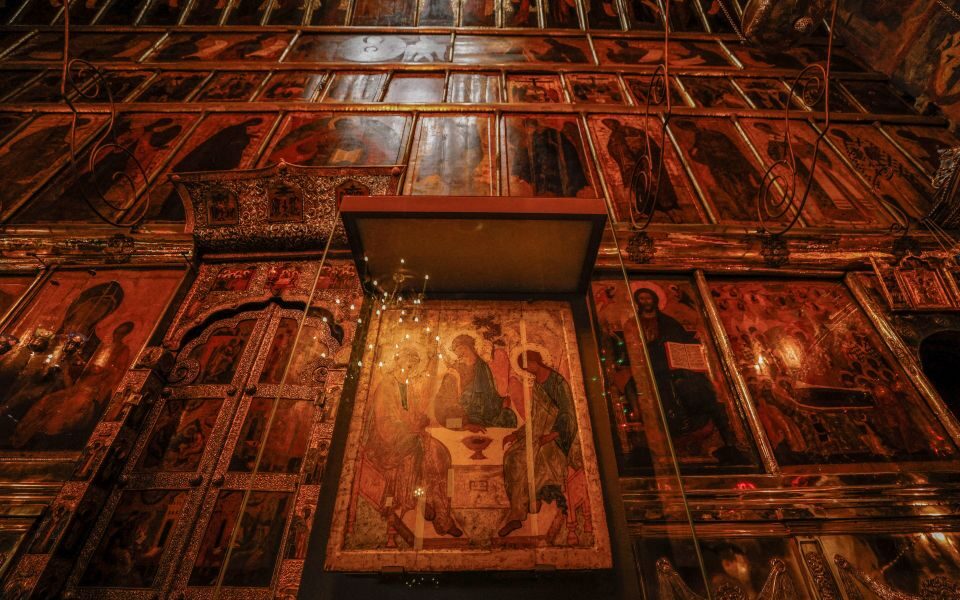
President Vladimir Putin’s decision to move one of Russia’s holiest icons from a museum to a Moscow cathedral highlights his growing reliance on the Church as the Ukraine war drags on, but has also raised fears about the safety of the fragile artifact.
Emphasizing its importance to the faithful, Putin last month ordered Andrei Rublev’s “Trinity” be transferred to the Russian Orthodox Church from Moscow’s Tretyakov Gallery for a year.
On Sunday, this year’s Trinity Sunday, the 15th-century artwork will take its place in the Cathedral of Christ the Savior, a vast church that was blown up under Josef Stalin but rebuilt in the 1990s after the fall of the Soviet Union.
The transfer of Russia’s most famous icon, which depicts the Oak of Mamre where the three angels visited Abraham in the Book of Genesis, underscores the extent to which politics and religion have become intertwined during the war.
“Putin has an interest in keeping the Church on his side in this war, to show he respects the Church,” said Regina Elsner, a theologian and researcher of the Russian Orthodox Church at the Berlin-based Centre for Eastern European and International Studies.
“Putin needs to show that the war is not his personal military activity, but that there is a higher, metaphysical mission in Russia that he is trying to fulfil.”
Russia’s propagandists have used Christian symbolism about fighting the devil and the anti-Christ to try to rally support for a war that has gone on much longer than the Kremlin or the West expected.
Putin frames the war as a battle for the survival of Russia. The West says it wants to help Ukraine defeat Russia on the battlefield but does not want to destroy Russia. Ukraine says it wants to eject every Russian soldier from its territory.
After its stay at the Christ the Savior, the icon will be transported to the Trinity Lavra of St. Sergius – the spiritual center of the Russian Orthodox Church outside Moscow – where it had been brought just last year for separate religious celebrations.
Just over a century since atheist Bolsheviks came to power in the October 1917 revolution, Patriarch Kirill of Moscow and All Russia, the head of the Church, said believers could only have dreamed that the icon would be returned.
Kirill, a close ally of Putin’s, casts the war a “metaphysical” battle for Russia’s survival against evil and a decadent West seeking to destroy Russia.
For some, though, there is unease at the sway of the Church – and concern about possible damage to the fragile icon.
Ksenia Korobeynikova, a Russian art historian who has spoken out against the transfer on her popular art-focused Telegram channel, told Reuters the icon’s importance to Russia was on a par with Leonardo da Vinci’s “Mona Lisa” for European culture.
Korobeynikova expressed concern about the conditions the icon would be kept in, saying the Tretyakov Gallery had the “intensive care” specialists to attend to it.
She quipped that Russian leaders over the centuries have turned to icons in tough situations with the hope of victory.
“Perhaps there is something similar here,” Korobeynikova told Reuters. “The Church now has a completely new level of authority. If the Church asks for something, then most likely they [Russia’s leaders] cannot refuse it.”
The Church has said the necessary controls will be provided at the Moscow cathedral and that Tretyakov staff will supervise the artwork during its stay.
But late last month an archpriest and head of the Moscow Patriarchate’s expert council on church art, architecture and restoration was fired “in connection with the obstruction of bringing the icon” to the cathedral.
Russian art historians have spoken out against the icon’s removal, saying there is no way to safely transport the work, which is made of centuries-old wood and requires strict temperature and humidity controls, across long distances.
“Masterpieces of Russian icon painting and national shrines should not be exposed to unjustified risk,” members of a cultural council within the Russian Academy of Sciences wrote in an open letter to Russian Minister of Culture Olga Lyubimova.
“The only space suitable for placing the icon ‘Trinity’ by Andrei Rublev is in the halls of the Tretyakov Gallery, which is confirmed by almost a century of practice.” [AP]
